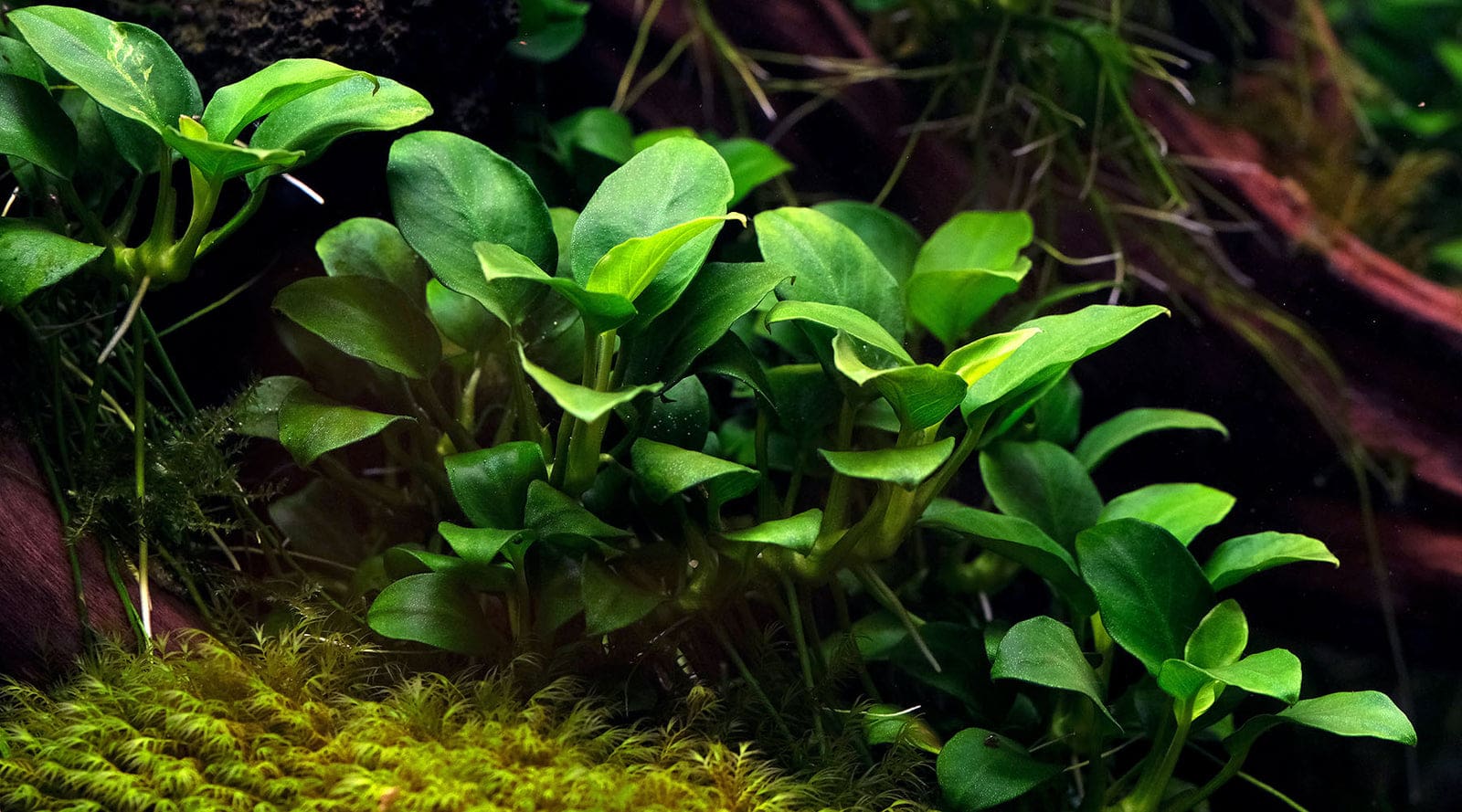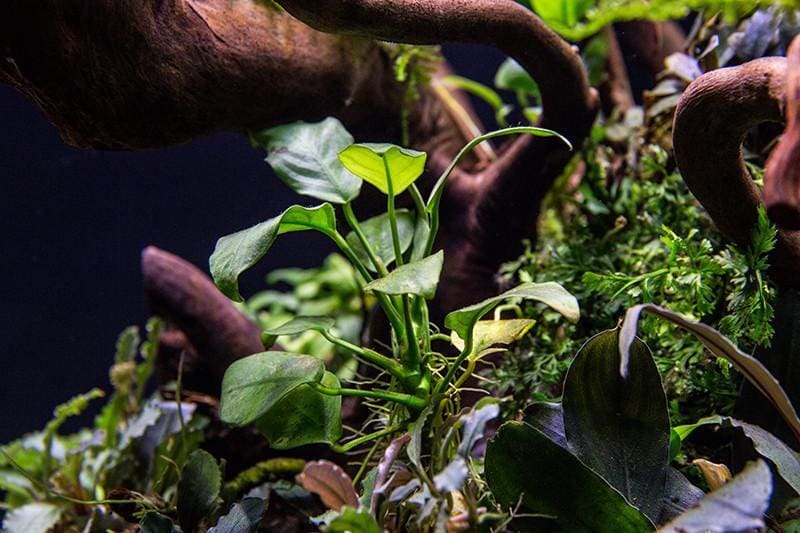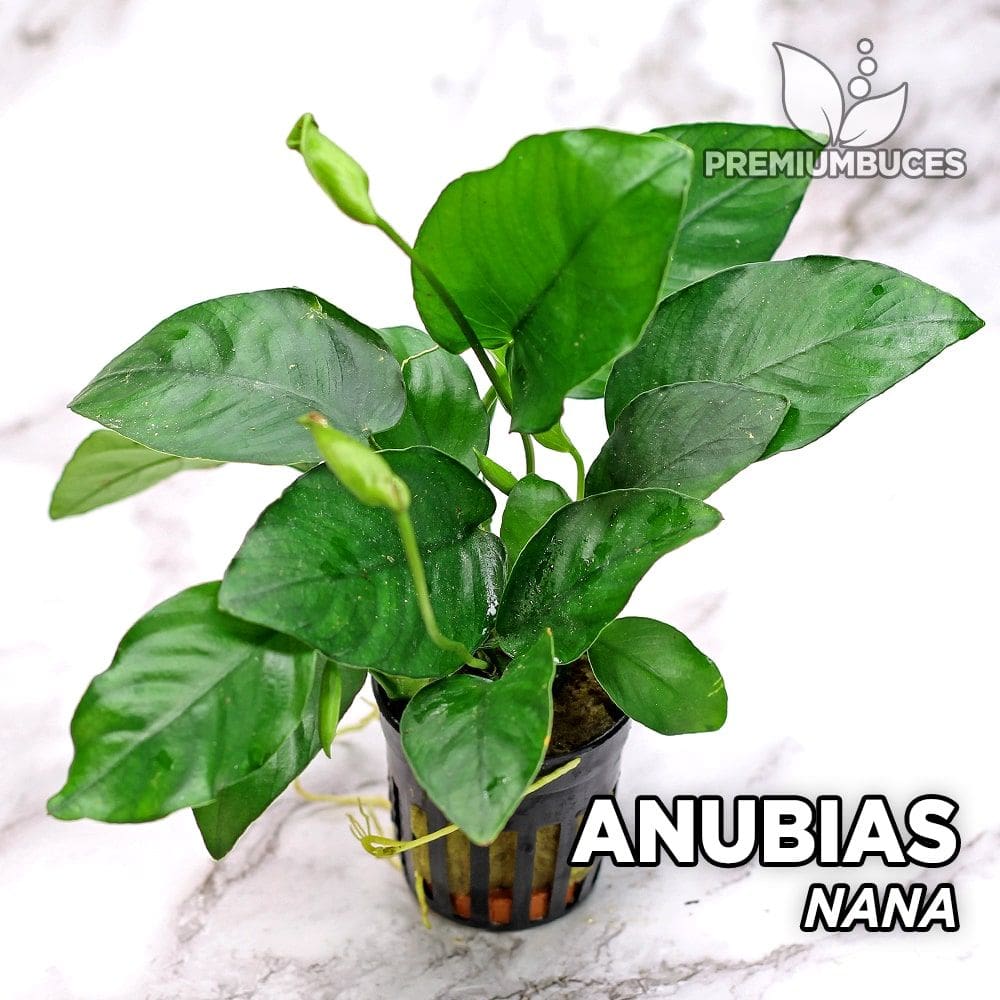In this scholarly discourse, you will explore the fascinating world of aquatic botanicals, focusing particularly on the plant known as Nana Anubias. This unique species is renowned for its adaptability and aesthetic appeal, making it exceptionally popular within the home aquarium landscape. Your journey will take you through the science behind this breed, its requirements for thriving in different environments and the potential subtle differences between this species and others within its genus. This is a riveting exploration that brings you face to face with a popular indoor greenscape specimen, its importance in the flora domain, and its implications for hobbyists and scientists alike.
Understanding the Nana Anubias
Key Characteristics
Within the Anubias genus, Nana Anubias (also known as Anubias barteri var. nana) is a popular freshwater aquatic plant. Its appeal comes from its slow growth, petite size, and resilience. Merely reaching a height of 5 inches, the compact, robust green-leafed plant becomes a wonderful addition to small aquariums and terrariums.
Native Habitat
Your Nana Anubias originates predominantly from West Africa, adapted to thrive in either partially or fully submersed in water bodies surrounded by tropical rainforests. Its native environment also includes riverbanks, marshlands, and shaded creeks, bearing witness to their need for temperate and humid conditions.
Growth Habit
The growth of your Nana Anubias is interesting, yet captivating. It is a rhizome plant, setting its roots on rocks, driftwood, or the substrate to anchor itself down. Its growth is infamously slow but steady, which can act as an advantage because frequent pruning becomes an unnecessary chore.
Botanical Description of Nana Anubias
Leaf Structure
The dark green, heart-shaped leaves of Nana Anubias are often the visual identifier of this species. The leaves posses a leathery texture, growing symmetrically along a creeping rhizome. Leaf size is relatively small, yet they have quite a high resistance against algae due to their tough texture.
Root Structure
The roots of your Nana Anubias plant anchor to hardscapes, which can include driftwood, rocks, or aquarium decorations. These roots are strong and sturdy, as they secure and attach themselves firmly to most surfaces. Remember, for healthy rhizome growth, it should not be buried into the substrate.
Flower Anatomy
Occasionally, Nana Anubias will produce a flower, particularly in optimum growth conditions. The flower structure exhibits a spadix and spathe fashion common to their Araceae family, resembling a pale yellow-green appearance.

Environmental Needs of Nana Anubias
Light Requirements
Nana Anubias can survive low to medium light conditions, making it a hardy plant for more shaded parts of your aquarium. However, when the plant is exposed to more intense lighting, mind the risk of acquiring algae growth on the leaves.
Water Parameters
Nana Anubias can tolerate a wide spectrum of water conditions, such as a Ph range from 6.0-7.5, accommodating slightly acidic to neutral water. Consideration for temperature is essential, having the preference towards a warmer environment of 22-28 degrees Celsius.
Substrate Preferences
Nana Anubias can attach itself to hard surfaces or substrates; however, its rhizome should not be buried. Gravel or sand substrate can work with this plant species, as long as the rhizome is exposed for growth.
Propagation of Nana Anubias
Natural Propagation
Nana Anubias naturally undergoes vegetative reproduction, sending out shoots from the rhizome or establishing runners that develop into new plants.
Manual Propagation Methods
To manually propagate, you can separate a portion of the rhizome, ensuring it has a few leaves attached. Cutting and re-attaching this new piece to a secure spot ensures a new plant’s growth, albeit slow and steady.
Common Propagation Issues
One common issue with Anubias propagation is rhizome rot, something to avoid by ensuring an exposed rhizome and stable water conditions.

Care and Maintenance of Nana Anubias
Trimming and Pruning
Anubias Nana is a slow grower, making it unnecessary to frequently prune. Occasionally, removal of old or decaying leaves helps maintain the plant’s healthy appearance and growth.
Fertilization Needs
Your Nana Anubias plant will have slow but steady growth without fertilization. However, for encouraging vigorous growth, you may add a quality aquarium plant fertilizer as it assists in providing the necessary nutrients.
Preventing and Dealing with Diseases and Pests
Nana Anubias is generally pest resistant due to its leathery leaves, although it can be vulnerable to spot algae. Regular tank cleaning and ensuring parameters for light and nutrients helps combat diseases and pests.
Importance in Aquascapes
Use in the Foreground
Due to its small and compact nature, Nana Anubias becomes an excellent choice for the foreground of your aquascape, providing unique and attractive anchor points.
Use in the Middle Ground or Background
In smaller tanks, Nana Anubias can work well as a middle ground or background plant, often attached to aquarium decor or rocks to create a sense of depth and variety.
Combining with Other Plants in an Aquascape
This versatile plant pairs well with various aquarium plants, like mosses, swords, or ferns, providing an amazing and harmonious aquascaping aesthetic.

Compatibility with Fish and Invertebrates
Ideal Tank Mates
Nana Anubias is compatible with most peaceful community tank fish. Even certain shrimp and snail species can share the environment with Nana Anubias, making it a versatile choice for your aquarium.
Potential Problematic Species
Avoid pairing Nana Anubias with fish known for plant nibbling habits or those who can dislodge the plant from its anchor.
Differences Between Nana Anubias and Other Anubias Varieties
Anubias Barteri var. Nana vs. Anubias Barteri
Anubias Barteri var. Nana is smaller compared to the Anubias Barteri, making it more suitable for small tanks. Furthermore, the leaf shape of the Nana variant is rounder and more compact.
Anubias Nana ‘Petite’ vs. Anubias Nana
The ‘Petite’ variant of Anubias Nana is even smaller with tinier leaves, making it an ideal choice for nano aquariums or areas in larger tanks that need a small accent.

Common Problems and Solutions in Growing Nana Anubias
Dealing with Slow Growth
Do note that slow growth in Nana Anubias is natural. However, providing adequate, but not excessive light, and supplementing aquarium plant fertilizer can encourage growth.
Addressing Yellow or Brown Leaves
This might be a sign of poor nutrient intake or light exposure. Rectify it by checking your water parameters, adjusting light exposure, or introducing appropriate fertilizers.
Managing Common Pests and Diseases
Remember, maintaining a clean aquarium, ensuring proper light, and regular inspection for any signs of pests can prevent many common issues.
FAQs About Nana Anubias
Is Nana Anubias a Good Beginner Plant?
Yes, Anubias Nana, with its hardy nature and less demand for maintenance, serves as an excellent choice for beginner aquarists or hobbyists.
Can Nana Anubias Grow Out of Water?
Yes, Nana Anubias can grow out of water, as it’s commonly seen in its native environments on riverbanks and other semi-aquatic conditions.
Why is my Nana Anubias Not Growing?
Slow growth is typical for Nana Anubias, but if no growth is observed, check nutrient levels, lighting, and water parameters to ensure they are within the plant’s preferred range.
